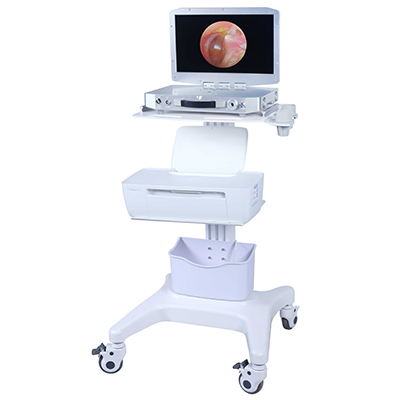ENT endoscope, pure and non-radiation, is safer; adopts the whole process of digital control of temperature, which can be accurate to 0.05 degrees, does not burn the mucous membrane, does not damage the ciliated epithelium, and has no side effects. Under the visual monitoring of the whole process of ENT endoscope, rhinitis, nasal polyps, sinusitis, snoring, deviated nasal septum, otitis media and other surgeries can be completed in about 10 minutes. There is no postoperative bleeding, no pain, and no need to be hospitalized.


Function introduction: Nasal endoscope is an indispensable instrument for nasal endoscopic surgery. Nasal endoscopic surgery is an operation performed on the nasal cavity and sinuses under the instruction of a nasal endoscope. It has the advantages of good lighting and precise operation, and reduces unnecessary surgical damage. Nasal endoscopic surgery is mainly used for the treatment of chronic sinusitis, nasal polyps, resection of benign nasal masses, epistaxis treatment, repair of nasal trauma, and adjuvant treatment of paranasal lesions and middle ear lesions.
Nasal endoscopy, also known as functional endoscopy, is a new technology developed. The most common ones in the treatment of nasal diseases are nasal polyps, sinusitis, allergic rhinitis, paranasal sinusitis, and nasal cysts, etc. The success rate is as high as 98%. Compared with traditional surgery, it has no pain, minimal trauma, and quick recovery. , good effect and so on.
The application of nasal endoscope is an era-crossing change in the field of nasal science and a new technology developed. With the help of the good illumination of the endoscope, the traditional destructive operation is transformed into the normal structure of the nasal cavity and paranasal sinuses on the basis of completely removing the lesions, forming good ventilation and drainage, and maintaining the shape and function of the nasal cavity and sinus mucosa. normal. Its application has been extended to the ear, nose, pharynx, larynx, head, neck and other research fields.
Nasal endoscopic surgery, also known as functional endoscopic sinus surgery, makes the surgery more delicate by virtue of the good lighting of the endoscope and the supporting surgical instruments. The operation is performed in the nostrils, and there is no incision on the nose and face. It is a surgical technique that can not only remove the disease, but also retain normal physiological functions. On the basis of removing the lesions, the normal mucosa and structure of the nasal cavity and paranasal sinuses should be preserved as much as possible to form good ventilation and drainage, so as to promote the recovery of the shape and physiological function of the nasal cavity and sinus mucosa. Relying on the recovery of the physiological functions of the nasal cavity and sinuses, the ideal therapeutic effect can be achieved.
Due to its strong light guiding, large angle and wide field of view, the nasal endoscope can directly peep into many important parts of the nasal cavity, such as the openings of each sinus, various grooves, hidden stenoses inside the sinuses and subtle lesions in the nasopharynx. In addition to surgical treatment, videography can also be performed at the same time, and data can be saved for consultation, teaching observation and scientific research summary. This method has the advantages of less trauma, less pain during and after operation, thorough operation, and fine operation. Nasal endoscopic surgery can not only remove rhinitis, sinusitis and nasal polyps, but also correct otolaryngology diseases such as nasal septum deviation and vocal cord polyp removal, thereby reducing the postoperative recurrence rate.
Advantages:
1. Using high-brightness LED light source, light guide fiber lighting, strong brightness, clear observation of the scene, changing the external method used by traditional rhinologists. And there is no radiation, no toxic and harmful substances (such as: mercury), to avoid the damage to the body caused by the mercury spilled from the rupture of the fluorescent tube.
2. The viewing angle is large. Using endoscopes from different angles, the doctor can make a comprehensive observation of the nasal cavity and sinuses.
3. High resolution, no focal length limitation, both near and far objects are very clear.
4. Nasal endoscope has a magnifying effect. Moving the nasal endoscope from 3 cm to 1 cm from the observation scene can magnify the observation object by 1.5 times.
5. The nasal endoscope can be connected with the camera system, so that the operation method, operation cavity and other conditions can be completely displayed on the monitor, which is beneficial to the observation of the operation director, operator and assistant. Changed the rhinology for many years, one person can't see clearly and others can't see clearly, and learning surgery depends on his own "understanding" of the drawbacks.
6. One-click capture, user-friendly design. It is convenient to carry and easy to operate, and integrates image acquisition, processing, and text editing functions. When operating, you can take pictures with the keys.
Post time: Jul-07-2022




